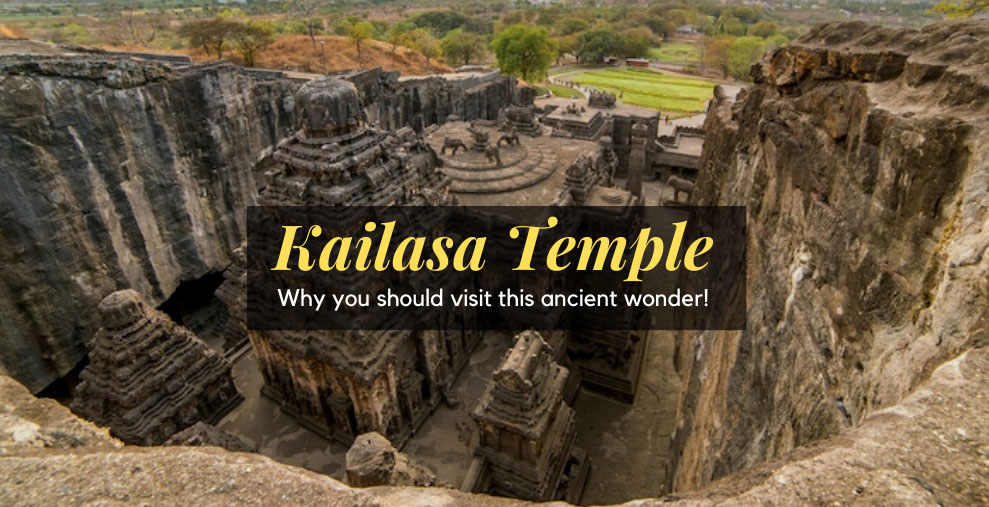The first item that caught our attention when we entered the Ellora Caves complex were these stunning stone carvings. The stone carvings were part of the Kailasa Temple’s Cave 16 gate. The Kailasa Temple was directly across the street from the main gate. The earthy facade stood out like a sore thumb. As we got closer to the Temple’s gate, we noticed two sentinels guarding the shrine’s entrance. The entryway was elegant but understated. Our jaws dropped as we passed through the gates and inside the temple complex. Various sagas concerning the majesty of the Kailasa Temple had been read, heard, and witnessed. Nonetheless, the initial impression was completely overwhelming. It was hard to realise we were actually there.
The Kailasha Temple is modelled after Mount Kailash in the Himalayas, which is the fabled home of Lord Shiva, the presiding deity. In actuality, Kailashnath referred to Lord Shiva and signified “Lord of Mountain Kailash.” The multi-story temple was so detailed that it appeared to be larger than life. A screen with a beautiful carving of Gajalakshmi greeted us as soon as we walked in. We entered a courtyard with a double-story chariot-style temple in the centre. In the courtyard, there were several smaller canopies, two flagstaffs or Dhajastambha, and a monolith that had been an elephant statue.
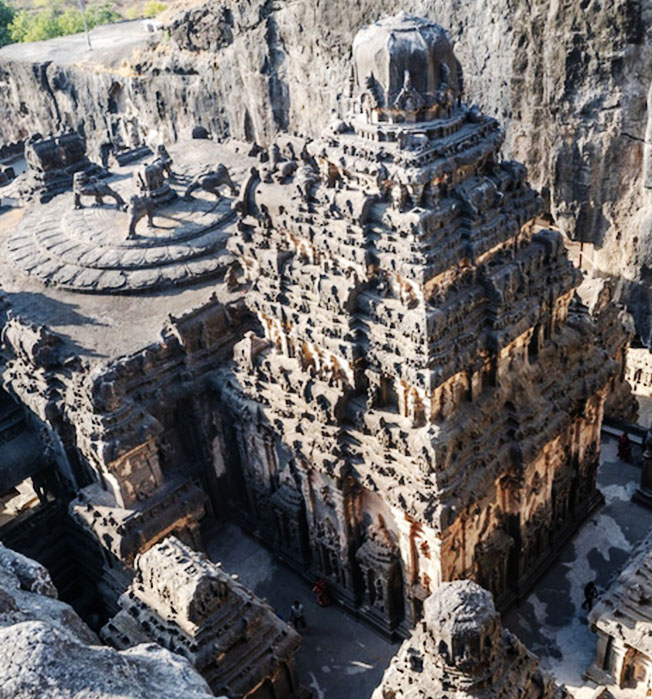
The ground-floor corridors featured massive carvings of Shiva in various moods. Bhairava the slayer, Shiva performing the cosmic Tandav, and Shiva the groom during his marriage to Parvati, the daughter of the mountains, were among the ones we could recognise. While the statues were floor-to-ceiling, the attention to detail was incredible. Hairstyles, complex ornamentation, pleats in clothes, and other nuances of postures that anybody could overlook have been immortalised in stone. Parvati’s second toe crossed her big toe like a shy bride in the statue depicting the marriage. We noticed various carvings of Lord Vishnu in addition to Shiva and his consorts and friends.
The sanctum sanctorum, which had a huge Shiva Lingam, was located on the first floor. Because it resembles the womb or “Garbha,” the sanctum sanctorum of a Hindu temple is known as the “Garbhagriha.” The sanctum sanctorum of this massive temple was modest, as was customary in ancient Hindu temples. Because the deity would be decorated with gold and gems and this area of the temple was the place of riches, the sanctum sanctorum was always tiny from a strategic standpoint. As a result, the sanctorum needed to be secured, and a small compartment with a single opening was simple to guard.
Speciality of Kailasa Temple
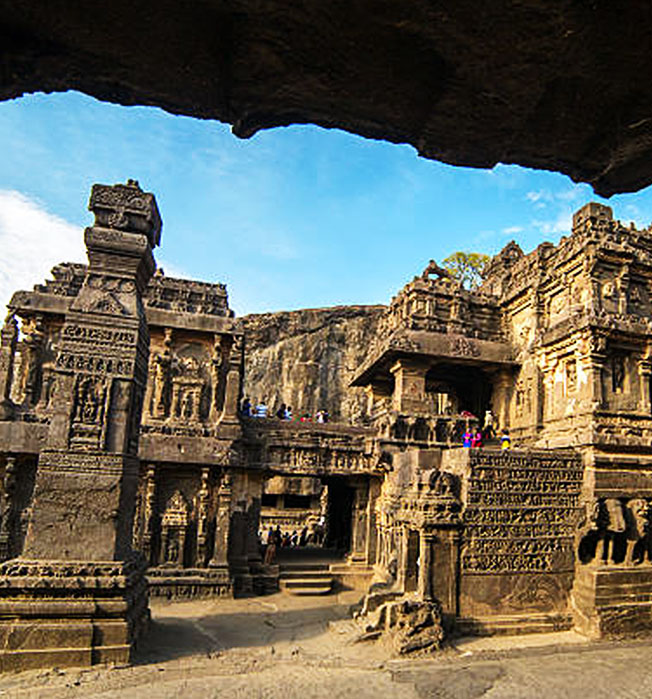
Kailasha Temple is the world’s largest monolithic temple. On the Charanandri Hills, it was sculpted out of a basalt cliff. The temple was built using a complex and polished architectural practise. The megalith was carved out of the granite from the top down. To put it another way, the spires and roofs appeared first, followed by the temple’s body, and finally the base. All of this was accomplished using only a hammer and chisel. Researchers are still baffled as to how this accomplishment was accomplished in the past. Even in today’s times, modern architects believe that creating a magnificent piece like this monument utilising top-down technology would be nearly impossible.
Places not to be missed at Kailasa Temple
The entire Kailasa Temple complex, as well as each individual corner, has the ability to blow visitors’ minds. It’s like seeing a magnificent movie play out scene after scene. There’s a lot we’d like to say, but in hindsight, it would be a massive spoiler. We recommend that you discover the temple on your own time and in your own way, based on our experience. However, there are a few items that you should keep an eye out for when visiting the temple.
1- Ravana Statue
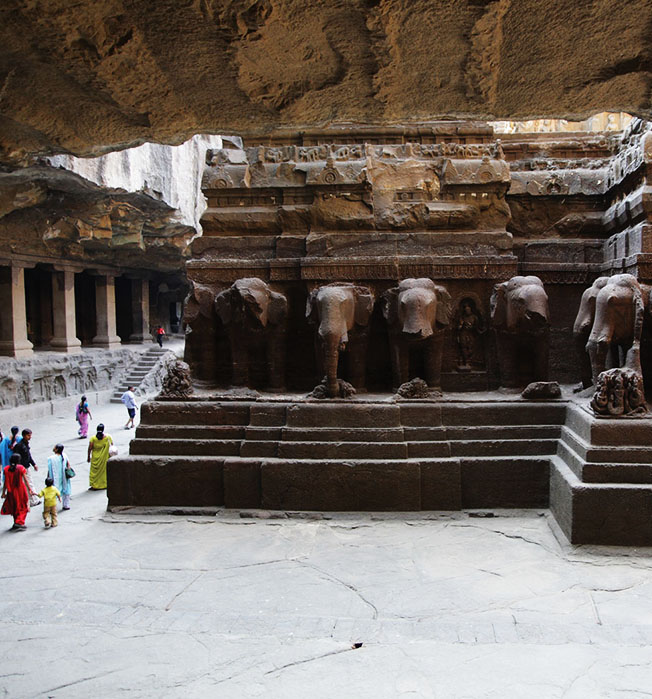
This is similar to a large plaque depicting Ravana, the evil king, attempting to raise Mount Kailasha in order to replace it in his country of Lanka. The many characters’ expressions in this composition are noteworthy. Shiva is calm yet amused as he pushes the mountain back with his big toe; Parvati is disturbed and is holding Shiva; her companions are terrified and trying to flee; Shiva’s students, on the other hand, are unfazed and confidence in their lord’s abilities.
2- The Elephants and Lions

On the bottom façade of the main temple, there are endless rows of elephants and lions, as though they are supporting the shrine. Elephants represent wealth, while lions represent power. Each animal has a distinct posture.
3- Dhajastambha

On the courtyard are two monolith obelisks, which could have been flagstaffs or Dhajastambhas. On the upper sections, the elaborate carvings are particularly notable.
4- Ardhanariswara
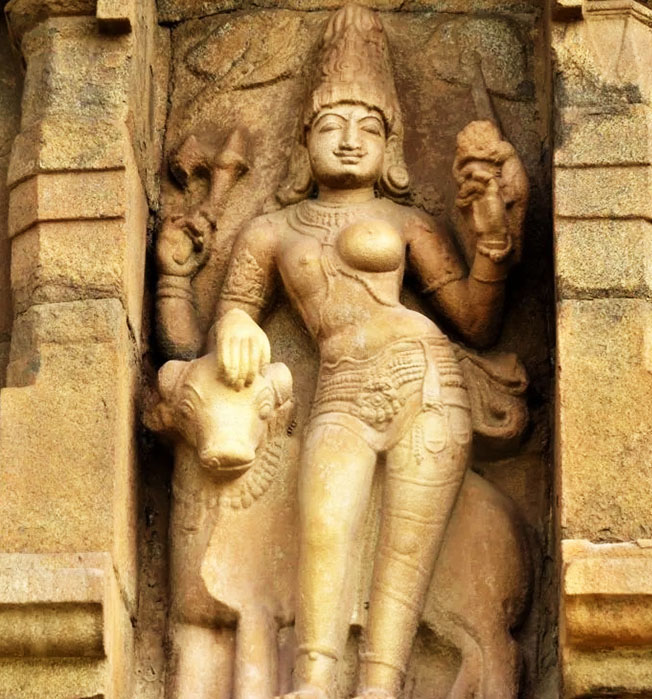
Lord Shiva’s Ardhanariswara statue on the first floor combines male and female traits into a single body.
5- The Bridge
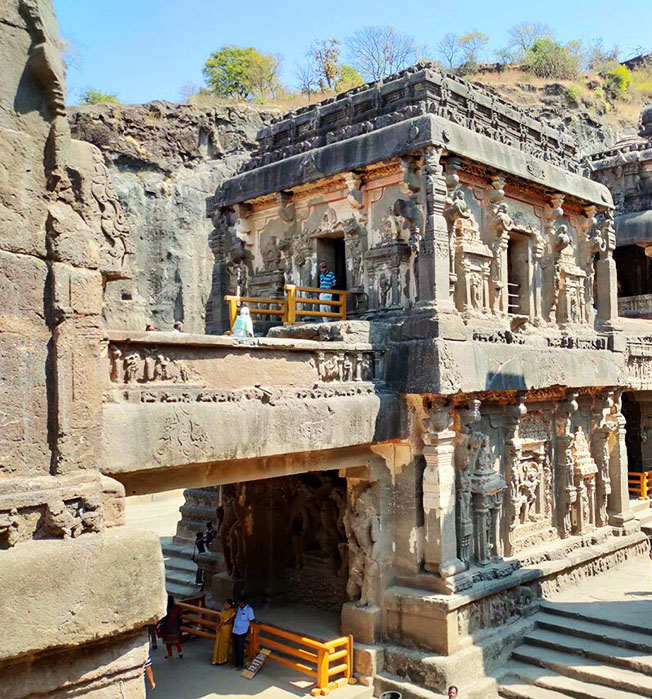
The main shrine, or Gopuram, is connected to the minor shrine for the bull Nandi, Lord Shiva’s vehicle, via a bridge on the first floor. This bridge is ideal for photographing since it perfectly catches the beauty of the Kailash Temple.
In addition, we already mentioned the Gajalakshmi and Ramanaya panels, which both blew our minds.
6- Statues of Ganga, Yamuna and Saraswati Rivers
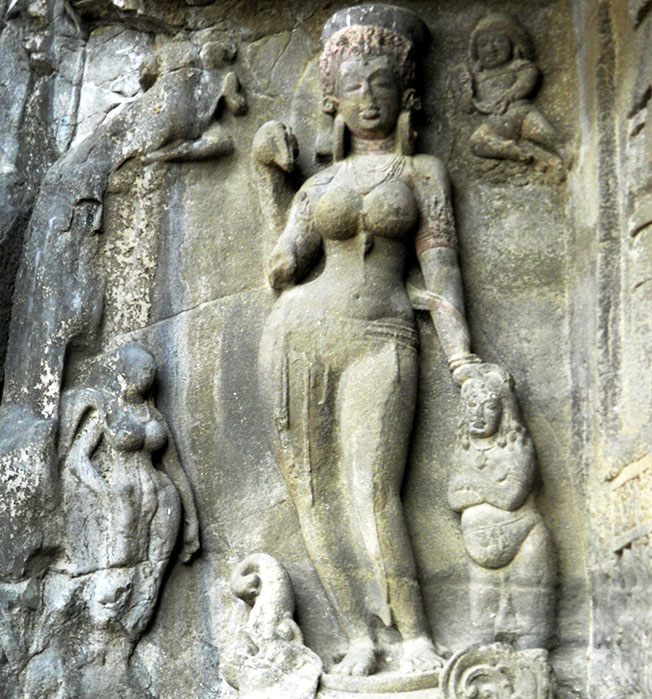
The sacred forms of the rivers Ganga, Yamuna, and Saraswati each have their own shrine within the complex. Another of Lord Shiva’s consorts is the Ganga River. The rivers’ wonderfully etched human figure is impressive.
